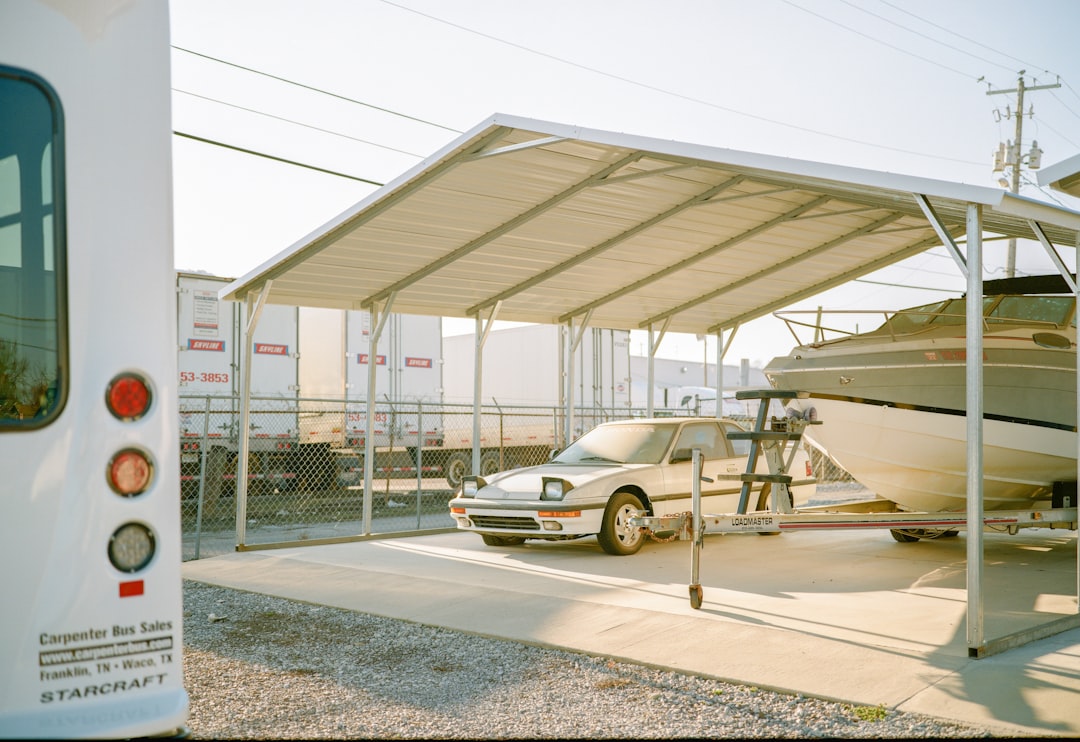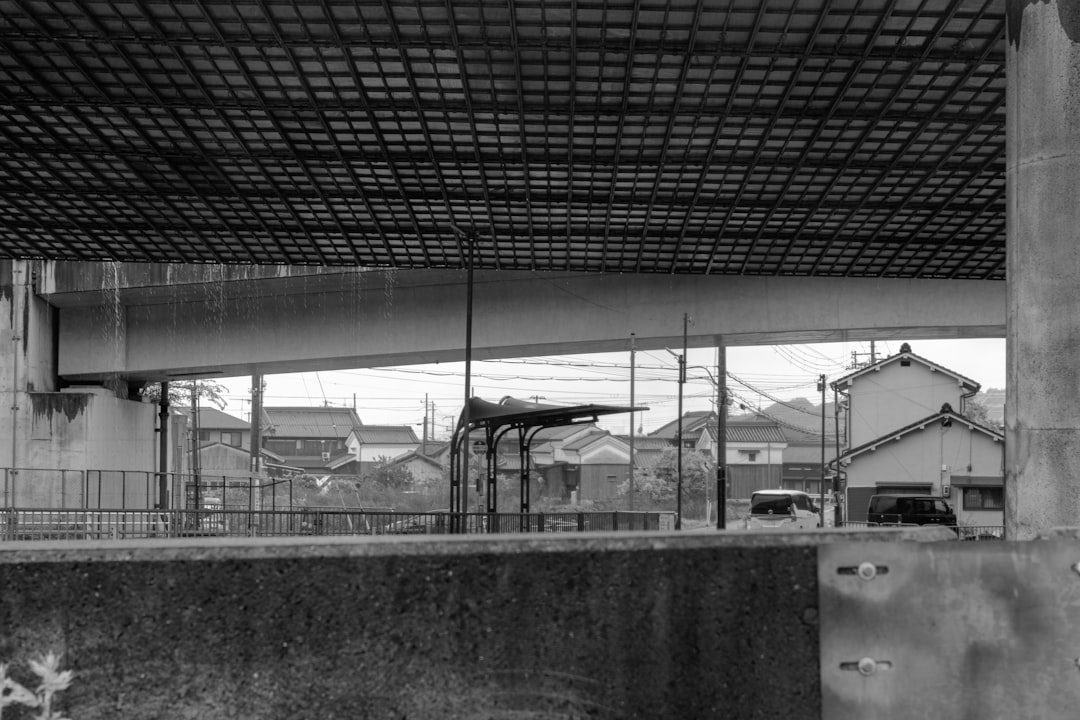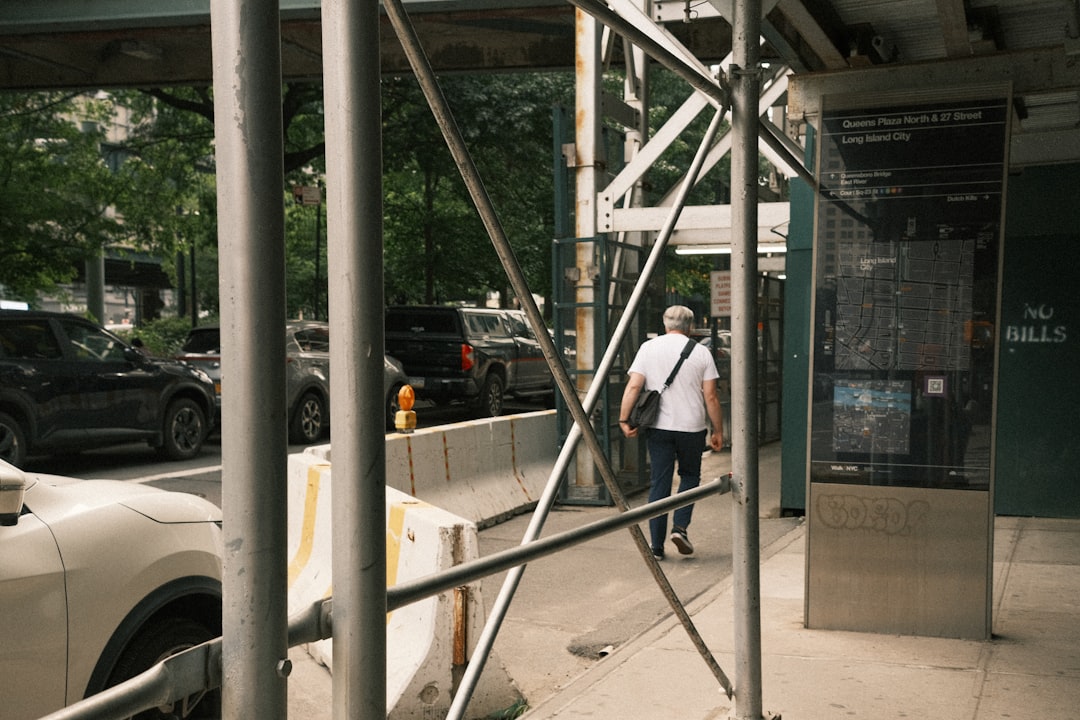

Engage prospects with a scan and streamline customer engagement with FREE QR code marketing tools by Sona – no strings attached!
Create a Free QR CodeFree consultation

No commitment

Engage prospects with a scan and streamline customer engagement with FREE QR code marketing tools by Sona – no strings attached!
Create a Free QR CodeFree consultation

No commitment
QR codes have become essential for connecting in-person customer experiences to online actions. For carport construction companies, QR codes offer a smart, frictionless way to drive more qualified leads, educate buyers about carport design and materials, and streamline everything from quote requests to post-installation support, with no app required.
Many carport builders still rely on paper brochures, printed sign-up forms, and manual follow-ups that slow down decision-making and growth. These analog processes introduce risks: key prospects may walk away before entering your pipeline, and team members often miss valuable touchpoints due to manual tracking. QR codes replace these outdated methods by providing instant access to the content, calculators, and next steps needed, whether on-site, at home, or on the go.
This guide shows how QR codes enable fast lead capture, support project transparency, and connect offline carport marketing to online conversion. Learn how these tools help overcome persistent frustrations like untracked high-value leads, loss of customer engagement, and attribution blind spots, so carport construction companies can capitalize on every moment of buying intent and deliver data-driven results at scale.

QR codes bridge the gap between physical touchpoints and digital outcomes, enabling carport construction companies to increase qualified leads, provide project details instantly, and shorten the sales cycle. When high-value prospects visit a model carport, drive by a job site, or pick up a brochure, a scan gives them everything they need to act. Instead of hoping they remember a URL or keep a flyer, you make the next step effortless and measurable.
Outdated processes like paper estimate forms, handwritten appointment requests, and printed product catalogs create friction and delay. Replacing those with QR-driven flows reduces drop-off, speeds up responses, and centralizes data for follow-up. You can send prospects to a quote form, a 3D design tool, or a booking calendar in seconds, then sync every interaction to your CRM for immediate sales action. With a flexible platform like Sona QR, you can manage, update, and analyze QR usage across every marketing asset, ensuring maximum impact from each campaign and a clear path from initial interest to qualified lead.

Carport construction sales rely heavily on offline moments: passersby seeing a sign, visitors at a model location, or homeowners reviewing installation documents. Traditional workflows leave these touchpoints untracked, so you never know who engaged or how interested they were. QR codes convert those moments into digital signals you can act on, giving prospects instant information while giving your team visibility and control.
Speed and simplicity matter in this category. Buyers compare materials, prices, and timelines, and often want to see examples, reviews, and permits before committing. A QR code can deliver floor plans, cost ranges, and booking in a single scan. Dynamic QR codes let you update offers or destination pages without reprinting signs, which is ideal for seasonal promotions or inventory shifts. With Sona QR, you can change the target URL anytime, track performance by location or asset, and view engagement trends that guide smarter spend.

Different QR formats serve different goals. Carport construction companies typically need to capture leads, show design options, facilitate bookings, and support customers after installation. Selecting the right format for each scenario ensures a smooth experience and meaningful data capture.
Web links, vCards, SMS or email prompts, and form links are the most useful options in this vertical. Web links route visitors to dynamic landing pages, 3D configurators, or financing information. vCards make it easy to save your sales rep’s details instantly. Form links funnel prospects into appointment booking or financing pre-qualification. SMS or email codes lower the barrier to reaching out, helping prospects send a templated inquiry with one tap. With Sona QR, you can generate all of these formats and manage them from a single dashboard, including dynamic codes that support updates and analytics.
Dynamic QR codes are the preferred choice whenever you need flexibility and analytics. Static codes suit unchanging content like a PDF permit checklist. For campaigns that evolve or require attribution, choose dynamic so you can test, iterate, and get precise performance data.

The unpredictability of when and where potential customers will engage with your brand creates gaps that hinder growth. By embedding QR codes at every physical touchpoint, you capture more of that fleeting intent, route it to the right digital experience, and attribute outcomes to specific placements. This lets you expand reach without increasing complexity.
Think about your most visible assets: vehicles, yard signs, job site fencing, showroom materials, and homeowner packets. Each can carry a QR code that matches the stage of the buyer journey most likely to happen in that context. For instance, a drive-by sign can link to a quick quote estimator, while an installation folder can link to maintenance videos and referral incentives. The combination of relevance and convenience increases scan rates and strengthens follow-up.

Carport buyers often research at odd hours, compare multiple vendors, and rely on visual proof. QR codes let you meet them where they are with the content and actions they want, while ensuring your team sees and responds to every signal. These are the most practical and impactful applications for builders and installers.
Deploy codes on both consumer-facing and operational assets. On the consumer side, focus on design inspiration, pricing clarity, and scheduling convenience. On the operations side, make it easier for inspectors and clients to find compliance documents and service information. Each use case drives measurable outcomes like higher form completion, faster responses, and increased post-installation satisfaction.
Every QR scan is a high-intent signal. By using distinct codes for different stages of the buyer journey, you automatically segment your audience and match follow-up to context. For carport construction companies, this can mean separate segments for drive-by sign scanners, showroom visitors, installation-day customers, and post-service respondents. Once segmented, each group receives tailored content that fits their needs.
To do this well, plan your codes with segmentation in mind. Decide which actions and environments signal awareness, consideration, and conversion, then assign unique codes and UTMs to each. Sona QR can auto-sync scan data with your CRM and ad platforms so you can create email nurture paths, trigger sales alerts, and build custom audiences for paid retargeting. To execute this approach, see Sona’s Playbook titled intent-driven retargeting: driving high-impact campaigns with first-party intent signals.
QR codes are connective tissue across channels. They make print assets measurable, turn events into digital capture points, and give your team visibility across what used to be opaque offline activities. This lets marketing and sales coordinate follow-up based on real behavior rather than assumptions.
In the carport category, your mix may include door hangers, neighborhood mailers, model lot displays, local home shows, and installation-day packets. Linking each asset to a relevant QR destination turns passive materials into active funnels. With Sona QR, you can manage code creation, consolidate analytics, and sync scan events with your CRM so performance is easy to compare across channels. For planning your spend, see Ask Sona’s what’s the best way to determine the optimal media mix.
QR codes serve as the offline onramp to your digital marketing engine. They also unlock a new layer of data collection across channels that were once difficult to measure. With a centralized platform like Sona QR, you can manage all your codes, monitor performance, and sync scan data with your CRM and ad platforms for continuous optimization.
QR success starts with a clear goal and a tight loop between scanning, action, and follow-up. Treat every placement as a mini funnel with its own audience, messaging, and conversion path. The steps below outline a proven process you can adapt to your company’s mix of signage, mailers, events, and installation materials.
Use this checklist during planning and execution, then revisit it after launch to refine. Teams that review performance monthly and iterate placements, CTAs, and destinations see the fastest lift in lead quality and cycle speed.
Clarify what business outcome you want. Examples include booking a free site visit, accessing a permit checklist, or downloading a carport material guide on a job site. Tying each QR to a single, specific purpose increases conversion and simplifies measurement.
Map use cases to placements. A yard sign might point to a quick quote estimator, while an installation folder should point to maintenance resources and referral incentives. The tighter the alignment between context and content, the higher the engagement.
Decide whether static or dynamic fits the job. Static codes are fine for unchanging resources like a PDF care guide. Dynamic codes are essential for campaigns you want to track and update, such as seasonal offers or region-specific landing pages.
If you need attribution, retargeting, or the option to update destinations later, choose dynamic. Sona QR supports dynamic codes with analytics, A/B testing, and integrations so you can compare performance and evolve without reprinting.
Make your code obvious and inviting. Use a branded frame, include your logo, and place a short, benefit-driven call to action right beside it, for example Scan for a custom quote. Maintain strong contrast with adequate quiet space so cameras lock on quickly.
Test scannability in real conditions. Check for sun glare on job sites, dusty environments near installations, and low light at trade shows. Verify scans on iOS and Android devices, at different angles and distances, and on various print finishes like vinyl and corrugate.
Roll out codes on your highest-impact channels first. Typical priorities include job site banners, direct mailers, showroom signage, model carport displays, and installer leave-behinds. Place codes at eye level, avoid curved surfaces where possible, and size them for realistic scanning distances.
Sequence your destinations across the buyer journey. For awareness assets like vehicle decals, link to a design gallery or pricing overview. For consideration assets like brochures, link to a booking calendar. For post-purchase assets like warranties, link to maintenance help and referral programs.
After launch, track scan volume, conversion rates, and time to follow-up. Use your Sona QR dashboard to compare performance by placement, creative, and CTA. If a code receives scans but few conversions, test a clearer call to action or a shorter landing page.
Iterate quickly. A/B test different CTAs, try alternate hero images on your landing pages, and rotate offers by season. Feed insights back into creative and placement decisions so your print assets get smarter over time instead of going stale.
For many carport construction companies, the toughest challenge is proving which marketing efforts drive revenue. QR codes solve this by tying offline engagement to digital actions, then to pipeline and closed deals. Visibility improves prioritization, which improves speed, which improves win rates. For frameworks, read Sona’s blog post single vs multi-touch attribution models.
Go beyond counting scans. Use analytics to understand which assets generate qualified inquiries and which ones only spark casual interest. With Sona QR and Sona.com, you can track every scan, unify it with website activity and CRM records, and attribute revenue to specific campaigns.
These insights let you reallocate budget toward the formats, messages, and placements that generate measurable ROI. Leadership gains confidence because attribution is clear, and your team avoids wasting time on channels that do not convert.
Once your first campaigns are live, small improvements compound quickly. Focus on clarity of message, contextual placements, and automated follow-up that turns scans into conversations. The goal is to make every code both useful to customers and valuable to your pipeline.
Choose a handful of tips to implement each quarter. Test, measure, and roll forward what works. As you scale, Sona QR’s integrations with HubSpot, Salesforce, and ad platforms allow you to turn scan activity into workflows, alerts, and audiences automatically.
QR codes represent a strategic shift for carport construction companies, turning every physical touchpoint into a digital lead source and every inquiry into a measurable opportunity. They address persistent issues like untracked high-value leads, slow follow-up, anonymous traffic, and the challenge of tying print placements to revenue. When used thoughtfully, they enable instant access to the right information, support transparent projects, and accelerate the move from interest to commitment.
By unifying offline and online journeys, surfacing previously invisible prospects, and automating next steps, QR codes help companies shorten sales cycles and create better customer experiences. With Sona QR for creation, management, and analytics, and Sona.com for identity resolution and multi-touch attribution, you can connect scans to revenue and make QR codes a core part of your performance marketing strategy. Start small, instrument every code, and iterate quickly; the path from scan to sale can be more direct than you think. Start creating QR codes for free.
QR codes have revolutionized carport construction companies by turning traditional project access and customer engagement into seamless, measurable experiences. From enabling secure, contactless site entry to providing instant access to design specs and service updates, QR codes streamline operations while enhancing client satisfaction and trust. Imagine effortlessly tracking which access points are used most or instantly updating construction details without any downtime—transforming how your company manages projects and communicates with customers.
With Sona QR, you gain the power to create dynamic, trackable QR codes that adapt in real time, eliminating the need for costly reprints and connecting every scan to actionable insights. Whether it’s improving site security, accelerating approvals, or deepening customer relationships, Sona QR turns every scan into a valuable touchpoint that drives efficiency and growth. Start for free with Sona QR today and unlock the full potential of QR-enabled access in your carport construction business.
QR codes help carport construction companies capture qualified leads, provide instant project details, shorten sales cycles, track offline engagement, and connect physical touchpoints to measurable digital outcomes.
QR codes reduce friction by replacing paper forms and brochures with instant access to quotes, design tools, and scheduling, enabling faster responses and centralized data for follow-up.
Useful QR code formats include web links to design galleries and quote forms, vCards for contact sharing, SMS or email prompts for inquiries, form links for appointments, and Wi-Fi access for job site collaboration.
QR codes should be placed on yard signs, vehicle decals, job site banners, brochures, installation folders, trade show materials, and direct mailers to match buyer journey stages and increase engagement.
Companies can use platforms like Sona QR to capture scan data including time, location, and device, integrate with CRMs, and attribute leads and revenue to specific campaigns for data-driven decisions.
Static QR codes link to unchanging content while dynamic QR codes allow updates to destinations, support tracking, A/B testing, and performance analysis without reprinting materials.
QR codes segment prospects based on buyer journey stages by using distinct codes, enabling tailored follow-up, syncing data to CRM and ad platforms, and creating targeted retargeting campaigns.
Design codes with clear calls to action, ensure easy scanning with good contrast and placement, test under real conditions, deploy on high-impact assets, and sequence destinations to match buyer journey stages.
QR codes on installation folders and warranties provide access to maintenance guides, cleaning videos, and claim instructions, reducing friction and encouraging referrals through positive experiences.
QR codes make offline assets measurable, connect trade shows and direct mail to digital funnels, enable real-time tracking, and unify marketing efforts for coordinated sales follow-up and optimization.
Use Sona QR's trackable codes to improve customer acquisition and engagement today.
Create Your FREE Trackable QR Code in SecondsJoin results-focused teams combining Sona Platform automation with advanced Google Ads strategies to scale lead generation

Connect your existing CRM

Free Account Enrichment

No setup fees
No commitment required

Free consultation

Get a custom Google Ads roadmap for your business






Launch campaigns that generate qualified leads in 30 days or less.
